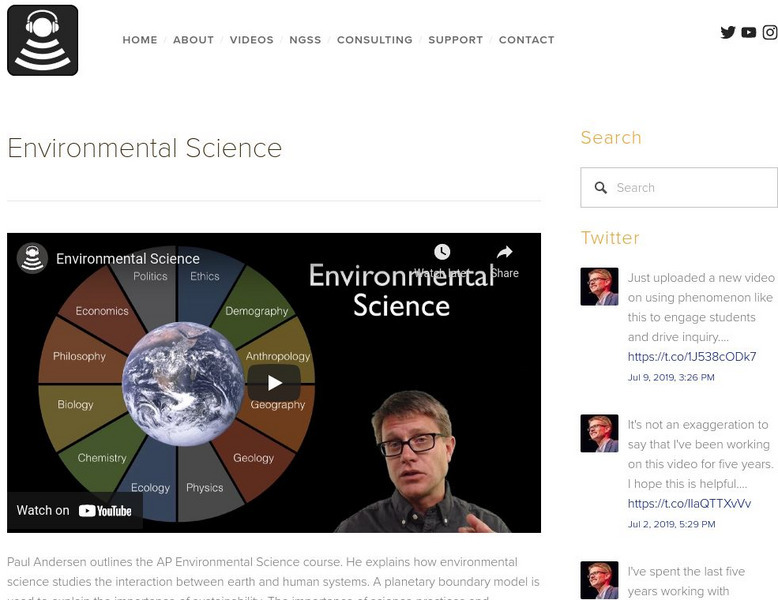Bozeman Science
Fossil Fuels
In this video Paul Andersen explains how fossil fuels are formed when organic material is heating and squeezed in an anaerobic environment. Formation, extraction, advantages, and disadvantages are discussed for coal, petroleum and...
Bozeman Science
Ecosystem Diversity
In this video Paul Andersen explains how biodiversity can be measured through genetic, species, or ecosystem variety on the planet. Species diversity is increased through speciation and decrease through extinction. The mechanism for...
Bozeman Science
Geology
In this video Paul Andersen explains how rock is formed and changed on the planet. The video begins with a brief description of rocks, minerals, and the rock cycle. Plate tectonics is used to describe structure near plate boundaries. Hot...
Bozeman Science
Forestry and Rangelands
In this video Paul Andersen explains how forests and rangelands are managed to provide renewable lumber and cattle. Threats to renewability of forests include old-growth logging, forest fires, and tree plantations. Threats to renewable...
Bozeman Science
Environmental Science
In this video Paul Andersen outlines the AP Environmental Science course. He explains how environmental science studies the interaction between earth and human systems. A planetary boundary model is used to explain the importance of...
Bozeman Science
Soil and Soil Dynamics
In this video Paul Andersen explains how soils are formed and classified. Weathering of rock creates particles which are mixed with water, air, and organic material. Soils are classified according to particle size, chemical makeup, and...
Bozeman Science
Human Population Size
In this video Paul Andersen explains how the world population has undergone exponential growth since the industrial revolution. Predicting the future world population is difficult because each country will grow at different rates....
Bozeman Science
Energy Flow in Ecosystems
In this video Paul Andersen explains how energy flows in ecosystems. Energy enters via producers through photosynthesis or chemosynthesis. Producers and consumers release the energy from food through cellular respiration. An explanation...
Bozeman Science
Ecosystem Ecology
In this video Paul Andersen explains how ecosystems function. He begins with a description of how life on the planet is ordered from large to small in biomes, ecosystems, communities, population, and individuals. He describes the major...
Bozeman Science
Human Population Impacts
In this video Paul Andersen talks about the impacts of human growth on the environment and on themselves. The population, affluence, and destructive technology of a population impact the environment according to the IPAT equation. An...
Bozeman Science
Bozeman Science: Environmental Science
Paul Andersen outlines the AP Environmental Science course through a video, concept map, and slideshow. He explains how environmental science studies the interaction between earth and human systems. A planetary boundary model is used to...

